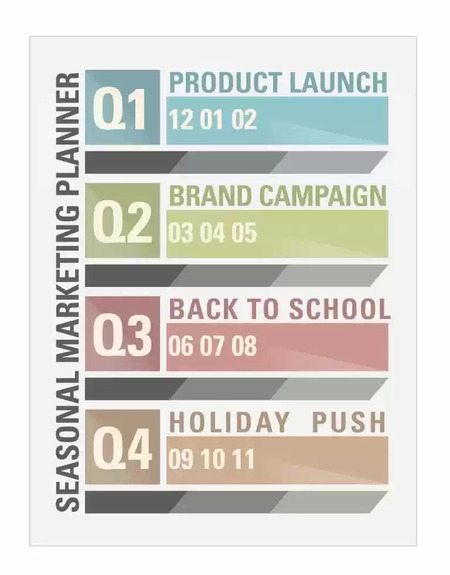Integrated marketing and the ability to run seamless campaigns across multiple channels is a skill that’s mastered over time. Like the conductor of an orchestra, the maestro of the integrated marketing campaign unifies the various segments to create a concerted effort in harmony or at least in synergy. As with any type of program or skill set, developing an approach that’s based on experience, testing and refining the results can ensure that any strategy can exist within a framework. So, in this post, we’ll share with you a framework you can use to launch an integrated marketing program that takes into account the processes, the people and the planning. Over time, you can mold the approach to accommodate what you’ve learned as you conduct your own integrated marketing campaigns.
Integrated campaigns: the planning
Whatever calendar cycle your business is on for planning and executing initiatives, start there in terms of planning for campaigns. It could be annually, quarterly or monthly. Take stock of the major business initiatives within the calendar and decide what marketing campaigns could support that.  Based on the total marketing budget and the various channels you have available to you, for example, paid and organic search, online video, television and radio, social media, conferences and networking events an others, start thinking about:
Based on the total marketing budget and the various channels you have available to you, for example, paid and organic search, online video, television and radio, social media, conferences and networking events an others, start thinking about:
- How the primary message will be disseminated not just the channel, but also in what form – graphic, industry report, video, or text.
- What the approach will be in each channel, for example, if paid search is the channel, will you pursue just text ads on the search network or also display ads?
- The offers that will be available and how they play out in the various channels, for example, social versus the web site
- How to create a unified story across every medium that attempts to matches to the customer journey
If you’re a visual person, sketch out these components on a whiteboard, so you can begin to see just how the story will be created taking these components into account.
Integrated campaigns: the people and the processes
To orchestrate a large-scale initiative, such as an integrated marketing campaign the right people and the right processes need to be in place. As we see it, the four operational keys to marketing campaign success are:
- Leadership
- People
- Progress
- Adjustment
Let’s look at those in closer detail:
- Leadership: Just like the orchestra needs its conductor to keep them on track when the performance pressure is on, so do the marketing teams. This leader is the maestro who will push the project along and ensure clarity, accountability and progress. This conductor is not usually the executive sponsor, but a project manager or integrated campaign manager.
- People: Integrated campaigns involve many people, especially in an enterprise situation, including teams from varying business units. Each individual needs to know his or her role in the big scheme and throughout the entire campaign, and this should be communicated from the top down, starting with the program leader to the team leader and so on.
To put this massive task into perspective, the roles that could be included in an integrated marketing campaign are:
- Creative director
- Content strategist
- Data analyst
- Designer
- Email manager
- Executive sponsor
- PPC manager
- PR manager
- Project manager or campaign manager (often the “leader” role)
- SEO manager
- Site manager or product owner
- Social media manager
- Video media manager
- Web developer
- Writer
- Progress: Aside from the obvious that progress should be made, progress reporting is key. All tasks associated with each role on the team should have a delivery date and progress should be measured and reported at various points in the timeline.
- Adjustment: Campaign structure is not set in stone due to the nature of digital marketing, where results are measured quickly and decisions on how to adjust can also be made in reaction. Be sure to communicate results and proposed or actual changes broadly to the entire group, so everyone is on board with an aligned vision.
Integrated marketing can seem intimidating at first, but brands can start small – even if it’s just with two or three channels. Create a test environment where these two-channel campaigns adopt the framework and use a coordinated schedule, record what you’ve learned and apply it to the next round, perhaps adding another channel to the mix. Over time, you will see the benefit of a coordinated campaign that is consistent in message and broad in its reach in the form of improved awareness and response.


